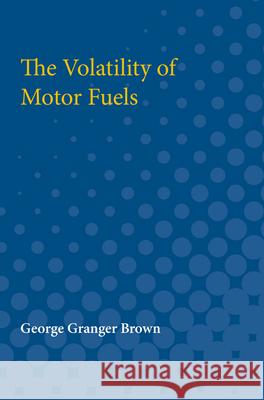The Volatility of Motor Fuels » książka
The Volatility of Motor Fuels
ISBN-13: 9780472750528 / Angielski / Miękka / 1930 / 310 str.
The ease with which a motor will start, the length of time required to warm it up, and the character of its general performance are almost wholly dependent upon the volatility of the fuel as indicated by the A.S.T.M. distillation curve. The 10-percent point is related to the lowest engine temperature at which satisfactory starting may be obtained, and the lowest mixture temperature at which the car may be operated. The 35-percent point is related to the lowest mixture temperature at which satisfactory performance may be obtained during the warming-up period and therefore determines the length of time necessary to warm up the motor. The 65-percent point is related to the lowest mixture temperature at which perfect performance can be obtained. For these reasons the 10-, 35-, and 65-percent points should be low to ensure satisfactory starting, warming-up, and general performance. The 90-percent point, however, should not be so low as to indicate a dry mixture, for this means loss in power or acceleration with many modern cars equipped with heated manifolds and accelerating devices. The vapor pressure of the fuel or the 10-percent point should not be so low as to indicate trouble from vapor-lock. The relations developed in The Volatility of Motor Fuels make it possible to determine the volatility characteristic of a fuel for any desired engine performance.











